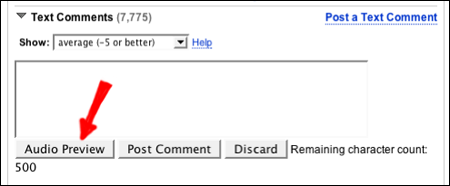November 10, 2008
Finding Fame With a Prescient Call for Obama
At 9:46 p.m., blogging on his site FiveThirtyEight.com, Nate Silver called the presidential election for Barack Obama. The television networks followed suit about an hour and 15 minutes later after most polls in Western states closed.Of course, Mr. Silver had a head start: he had forecast that Senator Obama would beat Senator John McCain back in March.
In an election season of unlikely outcomes, Mr. Silver, 30, is perhaps the most unlikely media star to emerge. A baseball statistician who began analyzing political polls only last year, he introduced his site, FiveThirtyEight.com, in March, where he used his own formula to predict federal and state results and run Election Day possibilities based on a host of factors.
Other sites combine polls, notably RealClearPolitics and Pollster, but FiveThirtyEight, which drew almost five million page views on Election Day, has become one of the breakout online stars of the year. Mr. Silver recognized that people wanted to play politics like they played fantasy baseball, and pick apart poll numbers for themselves instead of waiting for an evening news anchor to interpret polls for them.
FiveThirtyEight is “among the very first things I look at when I get up in the morning,” said Allan McCutcheon, who holds the Clifton chair in survey science at the University of Nebraska-Lincoln. “He helped make sense of some of the things that didn’t seem sensible.”
Mr. Silver has also become an in-demand analyst, appearing on MSNBC, CNN, “The Colbert Report” and Fox News.
“From a marketing standpoint, I’d rather hedge a little bit more,” he said, “but we’re the ones who are bold enough and are stupid enough to say what the polls translate to.”
He spent election night in a small studio inside the Newseum in Washington, as an on-air analyst for “Dan Rather Reports” on HDNet. During the campaign, Mr. Silver had learned a thing or two about television polish: he smoothed his hair, ironed his jacket, applied Visine drops and dabbed on concealer before a “hit,” as he had learned to call it.
This was his second television booking of the day, and a producer from “The Tonight Show” had called earlier. A makeup artist brushed on powder and a producer yelled into a cellphone as Mr. Silver sat sideways at his computer, his elbows splaying from his keyboard at angles that would alarm an ergonomist, squinting at Excel spreadsheets.
Mr. Silver has believed in numbers the way authors believe in words, as capable of expression and provocation, since he was young.
He “was a numbers fanatic,” said his father, Brian Silver, a political science professor at Michigan State University.
“When we took him to preschool one time, we dropped him off, and he announced, ‘Today, I’m a numbers machine,’ and started counting,” Brian Silver said. “When we picked him up two and a half hours later, he was ‘Two thousand one hundred and twenty-two, two thousand one hundred and twenty-three...’ ”
By kindergarten, he could multiply two-digit numbers in his head. By 11, he was conducting multivariate analysis to figure out if the size of a baseball stadium affects attendance (it doesn’t). By age 13, he was using statistics to manage a fantasy baseball team. When his parents refused to buy him computer games, he taught himself the Basic programming language and created his own.
He graduated from the University of Chicago in 2000, and was working for (and bored by) the accounting firm KPMG when he began messing around with baseball statistics. He tried to predict players’ performance based on their similarity to players from the past, like Bill James, a pioneer in baseball statistics, had done. But unlike Mr. James, Mr. Silver adjusted for body type, including factors like height and weight, discovering, for example, that taller pitchers age better.
He built a predictive system called Pecota around that, and sold it to Baseball Prospectus, a statistical organization, in 2002, staying on as a writer and consultant for the company. For the 2007 season, he correctly predicted the White Sox would lose 90 games. And for the season that just concluded, he predicted the longtime basement-dwelling Tampa Bay Rays would be a top team.
“I think everybody in our field is pleased and proud to see Mr. Silver’s work in political analysis taken seriously, and I’m sure that analysis is shaped to some extent by the ways of thinking that have been developed in our field,” said Mr. James in an e-mail message. “It’s a vicarious pride, much as one takes in the performance of the old school’s football team.”
Late last year, Mr. Silver, an Obama supporter, became frustrated with how primary poll results were being reported, and how sloppy polls and rigorous polls were given the same attention.
“What you heard on television was, Hillary was inevitable, she’s up 20 points,” he said. “She’s up 20 points because people had heard of her. They hadn’t heard of Obama.”
Mr. Silver posted his speculations on the liberal Web site DailyKos.com, and earned attention when he projected Senator Obama would win 833 Super Tuesday delegates, which was within about a dozen of the actual vote estimates.
He began feeding a database with every poll available, from the University of Akron to Zogby International, state demographics and election results from 1952 forward. He weighted all the polls on historical accuracy, and adjusted them for whether they tended to favor Democrats or Republicans and other factors, then built a model that simulated elections.
He began to see patterns, like leads in polls over the summer should be discounted, or a shift in opinion in North Carolina usually moves with one in Virginia.
In March, he introduced FiveThirtyEight.com, and it quickly became a go-to site for readers whose interest in raw numbers had grown after the close (and miscalled) elections in 2000 and 2004. As his reputation grew online — there’s a Facebook group called “There’s a 97.3 Percent Chance That Nate Silver Is Totally My Boyfriend” — the mainstream media he disparaged for sloppy reporting came calling.
Political predictions are “big this year because of Nate Silver,” said Sam Wang, who runs the rival site Princeton Election Consortium. “He loves discussing the details of the data, and his commentary is quite good. He’s made this hobby mainstream.”
Between his live TV appearances on election night, Mr. Silver updated his model and determined around 8 p.m., after New Hampshire went to Senator Obama, that Senator McCain had no way of winning. By the end of the night, Mr. Silver had predicted the popular vote within one percentage point, predicted 49 of 50 states’ results correctly, and predicted all of the resolved Senate races correctly.
The show ended at 1 a.m., and minutes later producers outside Mr. Silver’s studio were celebrating and popping Champagne corks. A crew member started to dismantle the desk where Mr. Silver was still examining data.
“You don’t have to go home, but we’ve gotta take your desk away,” the crew member said.
“O.K., just let me post this,” Mr. Silver said, narrowing his eyes at the screen.
One thing Mr. Silver cannot predict: what happens now. He suspects that Nov. 4 was the height of his popularity, and that producers will not be phoning as frequently any time soon. Publishers have been calling about a book, and he will continue with FiveThirtyEight, using it to predict Congressional votes during the Obama administration — if anyone cares.
“That’s the paradox,” he said. “You would think that you elect this guy and you want him to effect change, and then he gets elected, and people don’t care about bills being passed.”


 With the rise of app-laden smartphones like the iPhone and Google's Android OS, now on T-Mobile's G1, many penny-pinching shoppers have downloaded barcode scanning applications onto their mobile devices. These apps allow consumers to compare the prices of merchandise on a store's shelf to competing stores in the area just by taking pictures with their smartphone's camera. The prices are instantly retrieved and displayed on the mobile phone so consumers can know before they buy if they're getting a good deal.
With the rise of app-laden smartphones like the iPhone and Google's Android OS, now on T-Mobile's G1, many penny-pinching shoppers have downloaded barcode scanning applications onto their mobile devices. These apps allow consumers to compare the prices of merchandise on a store's shelf to competing stores in the area just by taking pictures with their smartphone's camera. The prices are instantly retrieved and displayed on the mobile phone so consumers can know before they buy if they're getting a good deal.  Although this is just anecdotal evidence from one customer, it's entirely believable that without concrete store policies in place, you're going to encounter rogue employees here and there who have no idea what you're doing and will ask you to stop.
Although this is just anecdotal evidence from one customer, it's entirely believable that without concrete store policies in place, you're going to encounter rogue employees here and there who have no idea what you're doing and will ask you to stop. 



